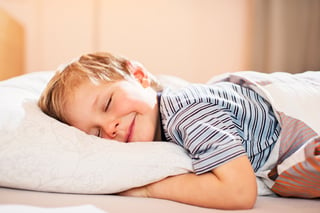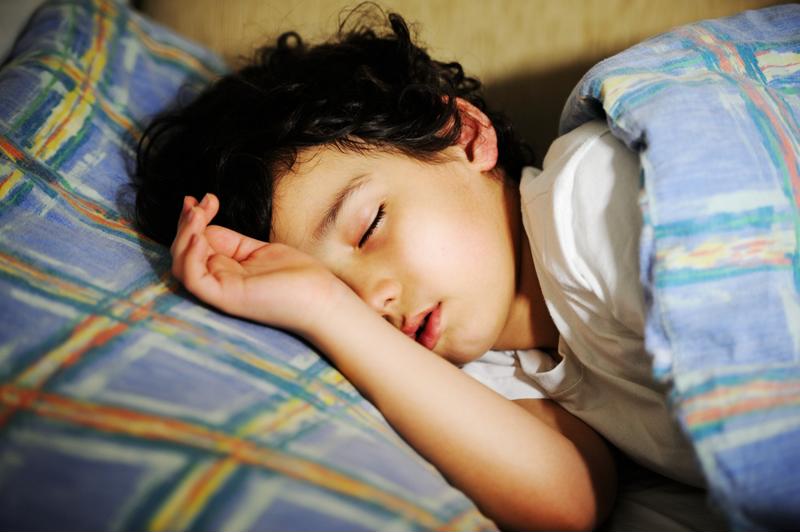 Creating good sleeping habits should involve positive actions before bed.,Creating good sleeping habits should involve positive actions before bed.
Creating good sleeping habits should involve positive actions before bed.,Creating good sleeping habits should involve positive actions before bed.Is your child getting a healthy night's sleep? If not, it could be due to the fact that your child is either sleeping with too much darkness or you're using night lights that are too bright. Several reports about sleep and healthy sleeping habits show that light saturation can disrupt or affect natural sleep cycles, which ultimately makes it harder to stay asleep, wake up or fall asleep altogether.
While some parents might read these reports and believe that all night lights or other forms of artificial light are bad, there actually are some recommended methods to provide light for your child's room at night.
Sleep disorders in children are very common, and many parents believe their kids are not receiving the right amount of sleep. In fact, Paul Gringras, a service director for Avon's longitudinal study and a sleep disorder professor, said roughly one in five parents think their child isn't sleeping effectively, the Guardian reported. Gringras added that years of studies have shown typical 1-year-olds obtain an average of about 11 hours of sleep per night.
"So some mothers will be tearing their hair out because their child is only sleeping nine hours, others if theirs are sleeping 13 hours," said Gringras. "Both are normal. They fall inside the bell curve, within what is expected. There are short sleepers and long sleepers."
 Getting your child in a good sleeping habit will lead to better rest.
Getting your child in a good sleeping habit will lead to better rest.However, many parents want to know how they can get their child or infant to receive the right amount of sleep. Luckily, there are a few ways to help your children sleep at night. Here are some tips to get your children to sleep more efficiently:
1. Set sleeping routines
Sleep routines are important for young children to get in the rhythm of going to bed each night. There's actually no need to worry about specifics to the routine. Just having one that stays on schedule is the most important thing, Cloud b, a retailer that specializes in children's sleep products, reported.
Additionally, while younger children will want to have some light instead of completely dark room, it can help to invest in a night light that can turn off after 30 to 60 minutes to save energy and keep your child asleep in a completely dark environment. If your child's night light doesn't have a timer, there are plenty of automated in-wall light timers available to set your child's sleeping routine each night.
2. Maintain positive sleep habits
Sleep habits are important for children, but sometimes bad habits can ruin their sleep patterns. For example, allowing children to watch television right before bed or allowing any sugary snacks before bedtime can leave children feeling restless or anxious while lying in bed. According to the National Sleep Foundation, following these guidelines is critical for infants and young children because bad sleeping habits "directly impact mental and physical development."
Also, you want to create positive sleep habits by not creating fear, anxiety or stress before a child sleeps. Even a pitch black room to sleep in could create stress and affect your child. Using a Jasco Projectables LED Night Light can help children reduce their stress of being a dark room and get more efficient sleep.
Making your child feel safe with the Disney Projectables LED night light could be a great way to reduce stress before sleeping and provide enough light without disturbing their sleeping pattern. This night light will project soothing guide lights onto the wall or ceiling of calming images of their favorite Disney character or Marvel superhero.
"Slowly introduce darker rooms to sleep in by starting off with a night light."
3. Encourage children to sleep on their own
While some parents let their kids hop into their bed at night, many researchers have found this to be counterproductive to healthy sleep habits. Independent sleep habits should be encouraged to limit the chances of children relying on a middle-of-the-night trip to your bedroom.
Once they know they can always come to you for a better night sleep, they disrupt their overall sleep habit. This can be addressed by slowly introducing darker rooms to sleep in by starting off with a night light. When your child is finally introduced to darker sleeping environments on their own, they will be disrupted less throughout the night and it will ultimately reduce the need for them to come to you to help fall asleep.

